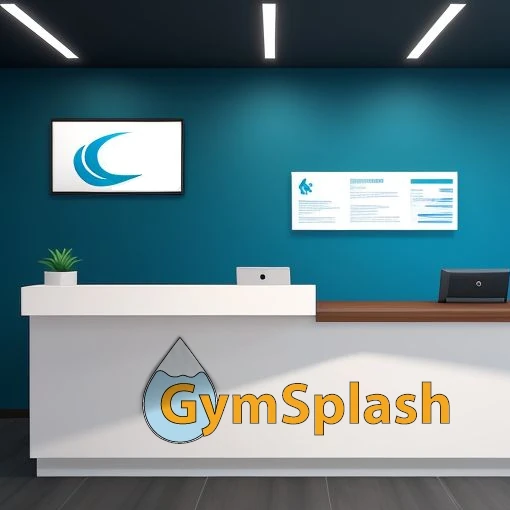From green studios to well-established fitness facility owners, the topic of running online advertisements inevitably comes up as an option at some point. While every situation is different regarding whether or not paid ads are a suitable financial or strategic decision, there are some things to keep in mind if you plan on running paid ads to market your fitness facility.
Gym Advertisement Checklist
Before diving right into the solution of throwing money at the client acquisition problem, we recommend ensuring that you have a few things in place first. Review the points below to help avoid unintentionally squandering your time, money, and energy.
Establishing Clear Goals
When starting your advertisement planning journey, it’s wise to begin with the end in mind. What gym growth goals are you trying to achieve for your fitness business? Similar to fitness programming, implementing a goal-structuring system (like SMART) can help clearly define what success looks like for your efforts. This defined goal can give you a contextual point of reference to gauge performance within your campaign during and after running paid advertisements.
Know Your Audience
We cannot emphasize the importance of knowing your gym’s target audience regarding marketing. Your audience will be the primary driver of answers for many variables you will work with when establishing what, where, how, when, and why you run Google Ads for a gym. Note: if your fitness facility has multiple target audience types, focusing on one audience type per ad campaign can be beneficial to avoid diluting message effectiveness.
Budgeting for Gym Advertising
Running advertisements (specifically Google Ads for gyms in this case) can become a bottomless pit to throw money into if you aren’t careful. That said, taking the time upfront to thoroughly understand your fitness business’s finances and make a calculated decision on available budget numbers to allocate towards advertising can be beneficial once you get into setting up your campaigns. Having a set gym budget plan allows you to distribute those funds amongst the various campaigns you will be running, set caps, and ensure you aren’t accidentally spending large amounts of money in places that aren’t yielding results.
Website Tracking for Gym Analytics
Once you have established your primary drivers for your marketing campaigns, you will also want to set up your website to track website traffic and usage. Tracking can be as simple as installing Google Analytics onto your gym’s website or as complex as customized code or integrations with your ad platforms. Still, you should be able to see gym analytics on how many people are visiting your site, what pages they explore, where they go, what users click on, how much time visitors spend on each page, goal/conversion setting, and ultimately, where they drop off at. These data points will help you get a better picture of lead interactions after they visit your site and allow you to set up your website better to enable smoother sales-based functionality.
Gym Sales Funnel
The final pre-ad checklist item we want to cover is building a comprehensive gym sales funnel. From how leads find your business to signing up and everything in between, a sales funnel helps a prospect member receive information and engagement systematically, yielding higher conversion rates and less manual time spent throughout the lead-to-member lifecycle process.
Running Google Ads for a Gym Campaign
After you have your base established for going into running ads and properly supporting leads acquired through them, it’s time to begin the process. When using Google Ads for a gym marketing campaign, keeping the following things in mind is helpful.
Campaign Type and Lead Category
As you prepare to start your ads, one of the first questions you will be prompted with when starting an ad campaign is the purpose. The campaign type will directly relate to the end goal (e.g., drive website traffic, lead generation, sales, etc.), but one of the large factors to consider is what stage of the buyer journey you are marketing to.
To simplify marketing purposes, we typically talk about the buyer’s journey here as three primary categories: Awareness, Engagement, and Conversion. Each stage has different needs, goals, interests, and calls to action. Therefore, each stage will require a different marketing approach and, consequently, a different ad campaign to support it.
Gym Ad Materials
Once you know what ad campaigns you plan to run, you will need to get more into the specifics, like who you want to advertise to and when. You must select if you want your ads to run on the search engine results page and/or their display network (websites that Google has their ad sense code implemented onto). Establish your ad date schedule (e.g., beginning and ending date) and time-specific details if you plan to run it at certain times (note: this defaults to your timezone associated with your Google profile). Further, you will also need to call out the location of where you want these ads to run (note: we typically recommend starting within your direct city or region if you are running a physical location-based gym).
Bringing back our gym budget for advertising topic earlier, you will set a daily budget for your campaign (note: we recommend getting this number by breaking down your monthly ad budget by dividing it by 30.4 and using that number – Google will run off of an average with the campaign, so some days may be above or below that daily budget you set). Next, you will select your bidding strategy for your keywords and phrases. Depending on your skill set, knowledge, and goals, you can default to Google setting a plan for you or manually set caps on CPC.
Keywords and ad content will also need to go into the system. For keywords, Google has a tool to help you plan your strategy built into their program. However, for your ad content, you will want to come up with multiple variations of subjects, body texts, call-to-actions, and artwork to load into the system. Google has a neat feature that can mix and match these pieces dynamically when displaying ads to help find the best combinations and keep content looking fresh.
Landing Pages for Your Gym Ads
The last point to cover for running the actual ads involves where the interaction with an advertisement will lead. Unfortunately, many gym owners default to using a current page on their main website. While there may be nothing technically wrong with this, there is a better way. Setting up landing pages specific to each campaign you are running allows you to better customize the content to fit the ad, target audience, and stage of the buyer’s journey within the sales funnel.
Ways to Optimize Your Gyms Google Ads
Optimization becomes the name of the game once you are up and running with Google Ads for your gym. We recommend this method in general for ads and marketing programs, but even with Google’s dynamic programming with their ads, we still emphasize A/B testing your ad campaigns over time. You may find that some aspects of one campaign work better than parts of another. Combining these winning attributes can enable even more significant potential going forward.
Analyzing your tracking metrics beyond the fundamental impressions and clicks data is critical. Going into your website traffic data and extrapolating traffic from each campaign can help give you insights as to which landing pages, content, sales options, or even promotions help drive goal success at each sales funnel level.
Finally, factor in your return on investment (ROI) to ensure you are moving the dial with profit and not losing money through budget creep. This can be accomplished through lead tracking from acquisition to conversion rates, average new client generation levels, and ad spend analysis. The more effective you can be at lowering cost per click, lead, and acquisition, the more money you retain within your business.
Making A Splash
Running Google Ads for a gym can be intimidating and expensive for many owners. That said, advertisements can be a high-quality source of leads for client acquisition with the proper pieces and planning in place and a plan to continuously optimize your campaign programming. With this continual improvement and optimization in play, you can help reduce your ad spend while increasing the overall efficiency of conversions within your campaigns over time.



